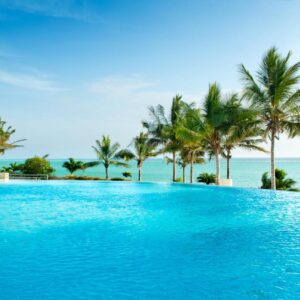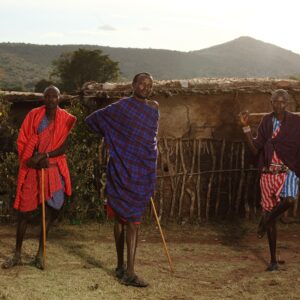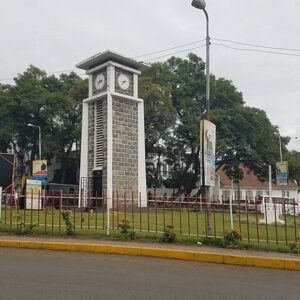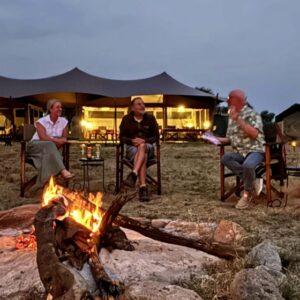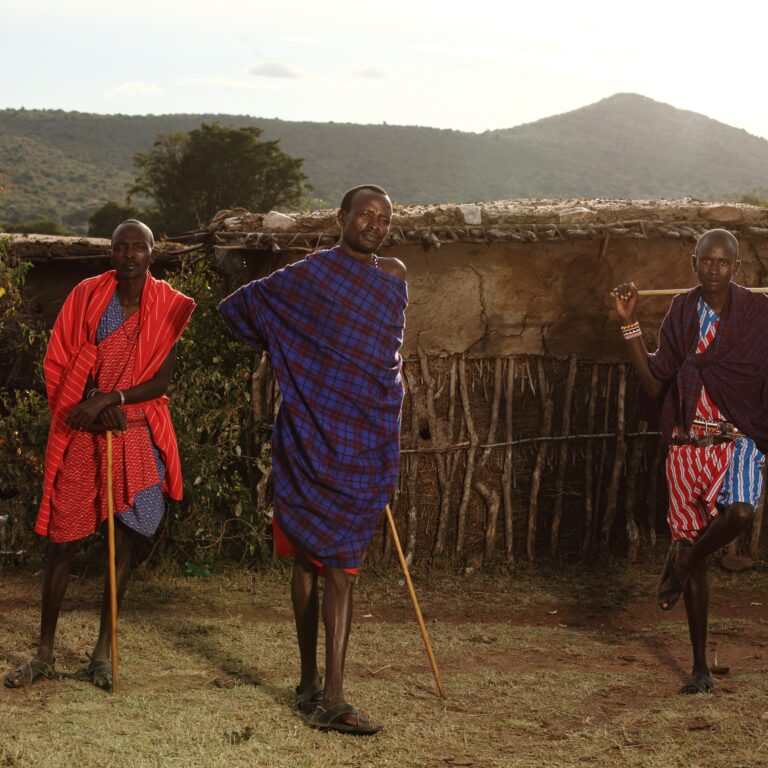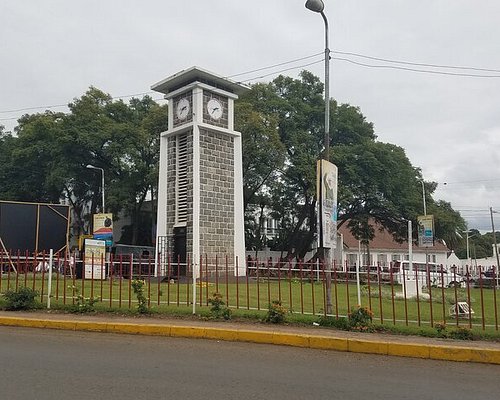Mount Kilimanjaro stands as a majestic beacon in Tanzania, attracting adventurers and nature enthusiasts from all corners of the globe. Scaling this iconic peak is a dream for many, and embarking on this journey requires meticulous planning, including considerations for shelter. In this comprehensive guide, we delve into the diverse types of tents and huts available on Mount Kilimanjaro, providing insights to help you choose the perfect accommodation for your expedition. On Mount Kilimanjaro, climbers typically sleep in either mountain huts or tented camps, depending on the route. The Marangu route is the only one that offers hut accommodations, while all other routes (Machame, Lemosho, Rongai, Northern Circuit, Shira, and Umbwe) utilize tented camps.
Traditional Tents: Your Gateway to Adventure
Traditional tents remain a popular choice for climbers tackling Mount Kilimanjaro. Crafted from durable materials such as ripstop nylon or polyester, these tents offer a blend of reliability and portability. Equipped with sturdy poles and robust guy lines, they withstand the mountain’s unpredictable weather conditions, including gusty winds and occasional precipitation.
Features of Traditional Tents:
Weather Resistance: Built to endure the harsh climate of Kilimanjaro, traditional tents boast superior weather resistance, keeping you dry and comfortable throughout your journey.
Ventilation: Strategic ventilation panels promote airflow, minimizing condensation and ensuring a fresh interior environment.
Spaciousness: Despite their compact design, traditional tents provide ample space to accommodate sleeping bags and gear, allowing you to rest and recuperate after a day of trekking.
Alpine Huts: Embracing Comfort at Altitude
For those seeking a more substantial lodging experience, alpine huts offer a cozy retreat amidst the rugged terrain of Mount Kilimanjaro. These communal shelters provide a welcome respite from the elements, featuring bunk beds, communal dining areas, and basic amenities to enhance your comfort.
Benefits of Alpine Huts:
Community Atmosphere. Alpine huts foster a sense of camaraderie among climbers, providing opportunities to connect with fellow adventurers and share stories of conquest and triumph.
Protection from the Elements. With solid walls and sturdy roofs, alpine huts shield occupants from inclement weather, ensuring a restful night’s sleep regardless of external conditions.
Convenience. Situated along popular trekking routes, alpine huts offer convenient rest stops, allowing you to refuel and recharge before continuing your ascent.
Hybrid Shelters: Bridging the Gap Between Comfort and Mobility
Hybrid shelters represent a versatile option for climbers seeking the best of both worlds. Combining the portability of tents with the amenities of huts. These innovative structures cater to the needs of modern adventurers, offering a seamless blend of comfort and convenience.
Advantages of Hybrid Shelters:
Adaptability: Hybrid shelters adapt to varying terrain and weather conditions, ensuring optimal performance in diverse environments.
Versatility: With configurable interior layouts and modular features, hybrid shelters cater to individual preferences. Allowing climbers to customize their living space according to their needs.
Durability. Constructed from high-quality materials and reinforced seams, hybrid shelters withstand the rigors of mountaineering, providing reliable protection against the elements.
Certainly! When climbing Mount Kilimanjaro, the type of accommodation you’ll encounter depends on the route you choose. Let’s explore the options:
Tents on Mount Kilimanjaro
Most Routes: On most routes (such as Machame, Umbwe, Rongai, or Lemosho), climbers will sleep in mountain tents. These tents are specifically designed for the challenging conditions on Kilimanjaro. For the majority of Kilimanjaro’s popular routes – including Machame, Lemosho, Rongai, Umbwe, and the Northern Circuit – tented camps are the standard form of accommodation. This camping experience allows for a deeper immersion into the raw wilderness of the mountain.
What to Expect from Tented Camps on Mount Kilimanjaro:
Structure. Trekking companies provide high-quality, four-season expedition tents. These are typically dome-shaped or tunnel-shaped, designed to withstand extreme mountain conditions, including strong winds, heavy rain, and cold temperatures. They feature sturdy frames, reinforced seams, and waterproof materials (nylon or polyester).
Sleeping Arrangements. Tents are usually shared between two climbers, providing enough space for comfortable sleeping and storage of personal gear. Single tents are often available for an extra fee. Your porters will pitch and take down the tents each day, ensuring they are ready for your arrival at camp.
Comfort & Insulation:
Sleeping Mats. Companies typically provide thick foam mattresses or inflatable sleeping pads for insulation from the cold ground and added comfort.
Sleeping Bags. As with huts, climbers must bring their own high-quality, four-season sleeping bags rated for sub-zero temperatures (e.g., −15∘ C to −25∘ C, or 0 ∘F to −15 ∘ F depending on the route and time of year).
Dining Tents. A separate, spacious dining tent is set up at each camp, equipped with tables and chairs. This is where meals are served, and it acts as a communal gathering space for your trekking group.
Toilet Tents. Unlike Marangu’s fixed facilities, camping routes often utilize private toilet tents. These are portable tents containing a clean, chemical toilet. While more basic than flush toilets, they offer a hygienic and private alternative to public pit latrines found at some campsites. Handwashing stations are typically provided outside.
Campsite Locations. Campsites are strategically chosen for their flatness, drainage, and scenic beauty. They offer breathtaking views and a direct connection to the mountain environment.
Advantages of Tented Camps on Mount Kilimanjaro:
Deeper Immersion. Sleeping under canvas provides a more authentic and immersive wilderness experience, allowing you to truly feel connected to the mountain.
Privacy. Sharing a tent with just one other person offers significantly more privacy than dormitories.
Flexibility of Routes. Camping allows access to the more scenic and varied routes (Machame, Lemosho, Rongai), which generally offer better “climb high, sleep low” acclimatization profiles, contributing to higher summit success rates.
More Remote Feel. These routes typically have fewer fixed structures, giving a greater sense of being “in the wild.”
Disadvantages of Tented Camps on Mount Kilimanjaro:
Less Protection from Elements. High-quality tents offer less insulation and soundproofing than solid huts. You’re more exposed to wind and rain.
More Basic Sanitation. Toilet tents, while private, are not flush toilets.
Carrying Extra Gear. While porters carry the main equipment, you’ll still need a good quality sleeping bag and possibly an inflatable mat, adding to your personal gear list.
Huts on Mount Kilimanjaro (Marangu Route):
The Marangu Route, affectionately known as the “Coca-Cola Route” due to its historical reputation for selling soft drinks at its huts, is unique among Kilimanjaro’s trails for offering permanent dormitory-style mountain huts. This makes it a popular choice for those who prefer the perceived security of a solid roof over their heads, especially during the wetter seasons.
What to Expect from Marangu Huts:
Structure. The huts are sturdy, A-frame wooden structures designed to withstand the mountain’s elements. They are spaced out at each campsite along the route.
Sleeping Arrangements. Accommodation is strictly dormitory-style. Huts typically feature bunk beds, usually sleeping 4 to 20 people per room, depending on the camp. There are no private rooms, meaning you will share with fellow trekkers, potentially from different groups.
Basic Amenities:
Beds. Simple mattresses and pillows are provided on the bunks. However, climbers must bring their own sleeping bags for warmth, as the huts are not heated and temperatures can drop significantly, especially at higher altitudes. A sleeping bag liner is also recommended for hygiene and added warmth.
Communal Dining. Each hut site has a dedicated communal dining hall. Meals prepared by your trekking crew’s cooks are served here at assigned tables. This central area provides a sheltered space to eat and socialize.
Toilets & Washrooms. At lower altitudes (Mandara and Horombo Huts), facilities typically include flush toilets and cold running water. As you ascend to Kibo Hut, the facilities become more basic, often consisting of pit toilets, and there is no running water (all water must be carried up by porters). Showers are generally not available, but some lower huts might offer cold-water showers for a small fee. Wet wipes are a must!
Lighting. Huts usually have basic solar-powered lighting, but don’t expect electrical sockets for charging devices. A high-capacity power bank and a reliable headlamp are essential.
Shops. Historically, some huts had small shops selling snacks and bottled drinks, giving the route its nickname. While less common now, some basic items might still be available at lower camps.
Advantages of Huts:
Shelter from Elements. Huts provide robust protection from wind, rain, and snow, offering a sense of greater security and warmth compared to tents, especially during adverse weather.
No Tent Setup/Takedown. Your porters do not need to set up and take down tents daily, which can be seen as less disruptive for climbers.
Communal Atmosphere. The shared dining halls foster camaraderie among different trekking groups.
Disadvantages of Huts:
Less Private. Dormitory sleeping means no privacy, and noise from other climbers can be an issue. Earplugs are highly recommended.
Less Flexible. You are confined to the designated huts, offering less flexibility in camp locations or itinerary adjustments.
Crowded. Due to its popularity and fixed accommodation, the Marangu Route can feel more crowded, particularly during peak seasons.
Lower Success Rate (Historically). While anecdotal, the Marangu Route often has a lower summit success rate compared to other routes, partly attributed to its shorter 5-day itinerary (which offers less time for acclimatization) and the “comfort” of huts potentially lulling climbers into a false sense of security regarding altitude challenges.
Choosing Your Accommodation Style
Your choice between huts and tents ultimately depends on your personal preferences, budget, and the specific route you wish to take.
For the “Comfort-Seeker” or during the rainy season: The Marangu Route’s huts might appeal.
For the “Adventurer” seeking deeper immersion, varied scenery, and generally higher success rates: The tented camping routes (Machame, Lemosho, Rongai) are highly recommended.
Regardless of your chosen route, remember that accommodation on Kilimanjaro is designed to be functional and supportive for climbing at high altitudes. Luxury as you know it is left at the base. The real luxury lies in the unparalleled experience of sleeping on the slopes of Africa’s tallest peak, under a canopy of a million stars, preparing for the ultimate summit push.
What are the different types of tents and huts available on Mount Kilimanjaro? Mount Kilimanjaro offers a variety of accommodations, including traditional tents, alpine huts, and hybrid shelters.
What are the features of traditional tents? Traditional tents on Mount Kilimanjaro are crafted from durable materials such as ripstop nylon or polyester, offering superior weather resistance, ventilation, and spaciousness.
What amenities do alpine huts provide? Alpine huts on Mount Kilimanjaro typically feature bunk beds, communal dining areas, and basic amenities to enhance climbers’ comfort. They also offer protection from the elements and a sense of community among climbers.
What are the advantages of hybrid shelters? Hybrid shelters combine the portability of tents with the amenities of huts, offering adaptability, versatility, and durability. They cater to the needs of modern adventurers seeking comfort and convenience on Mount Kilimanjaro.
How do I choose the right type of tent or hut for my Kilimanjaro expedition? When selecting accommodations for your Mount Kilimanjaro adventure, consider factors such as weather resistance, comfort, and portability. Choose a tent or hut that best suits your needs and preferences to ensure a successful ascent.
Do I need to bring a sleeping bag for the huts on the Marangu Route? Yes, absolutely. While mattresses and pillows are provided, the huts are not heated, and you will need a warm, four-season sleeping bag (rated for sub-zero temperatures) to stay warm at night.
Are there private toilets on the camping routes? Most reputable companies operating on camping routes provide private toilet tents with portable chemical toilets for their groups. This is a more hygienic and private alternative to public pit latrines at some campsites.
Which accommodation type is better for acclimatization? While huts offer psychological comfort, the camping routes (like Lemosho or Machame) often allow for better “climb high, sleep low” profiles, which are generally considered more effective for acclimatization, potentially leading to higher summit success rates.
Can I charge my phone/camera on the mountain? There are generally no electrical outlets in the huts or tents. You will need to bring a high-capacity power bank to charge your electronic devices. Solar chargers can also be an option for longer treks.
What is the main difference between sleeping in a hut versus a tent? Huts offer solid overhead protection and a fixed communal space, but with dormitory sleeping. Tents offer more privacy (typically 2 people per tent) and a deeper sense of wilderness immersion but are more exposed to the elements.
Toilets On Kilimanjaro And What To Expect
Sleeping on Kilimanjaro: Ultimate guide
Hygiene During Kilimanjaro Expeditions | Essential Tips.
The Alpine Desert Zone of Kilimanjaro – What to Expect
10 Reasons to Climb the Marangu Route
Conclusion: Types of tents and huts on Mount Kilimanjaro
Choosing the right type of tent or hut is crucial for a successful ascent of Mount Kilimanjaro. Whether you opt for a traditional tent, an alpine hut. Or a hybrid shelter, each option offers unique advantages to enhance your climbing experience. By considering factors such as weather resistance, comfort, and portability. You can select the perfect accommodation to suit your needs and preferences. Embark on your Kilimanjaro adventure with confidence, knowing that you have chosen the ideal shelter to accompany you on your journey to the summit.

